Potentiometers and their applications
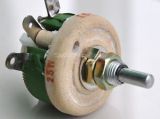 An adjustable voltage divider is called a potentiometer, which, unlike a rheostat, serves to regulate the voltage at almost constant current.
An adjustable voltage divider is called a potentiometer, which, unlike a rheostat, serves to regulate the voltage at almost constant current.
A voltage divider is a combination of resistances used to divide the applied voltage into parts. The simplest voltage divider consists of two resistances connected in series with a source of electricity. etc. with
The voltage removed from the movable contact to turn off the potentiometer can vary from zero to a maximum value equal to the voltage applied to the potentiometer, depending on the current position of the movable contact.
The magnitude of the removed voltage can either linearly depend on the movement of the slider, or logarithmically, and the potentiometers according to the type of this dependence are divided into linear and logarithmic (also anti-logarithmic). As you already understood, the speech in our article will continue for variable resistors.
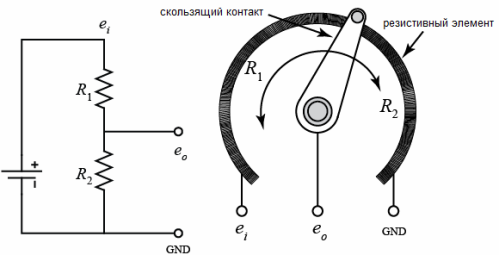
Many different variable resistors are manufactured today. For any electronic circuit, you can choose a variable resistor that will become a potentiometer.Meanwhile, variable resistors are divided into two types according to their structure: thin film and wire, and according to their functional purpose, direct variable and trimming.
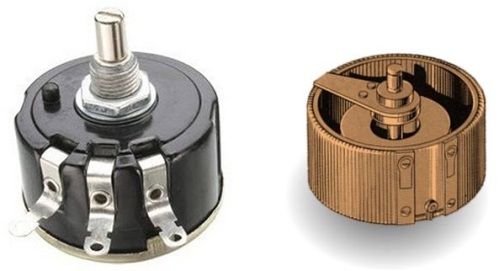
Wire variable resistors contain manganin or constantan wire as a variable resistance element. The wire is wound on a ceramic rod, forming a coil over which a slider connected to the regulating mechanism slides, and thus the resistance between the break contact and the main contacts can be changed. Wirewound resistors are capable of dissipating 5 watts or more.
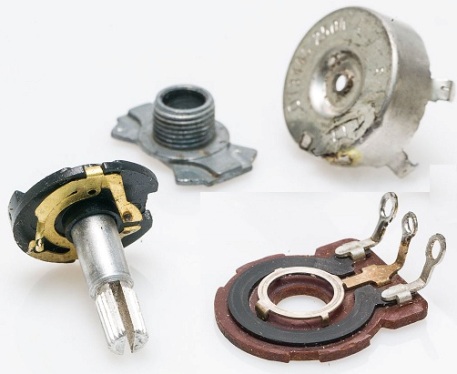
Thin film variable resistors contain, as a resistance element, a film deposited on a dielectric plate in the form of a horseshoe, on which a slider moves, which is connected to a withdrawal contact and to an adjustment mechanism. The film is a layer of varnish, carbon or other material that is specified in the documentation.
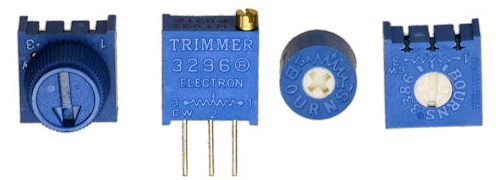
Trimeric resistors are used for single resistance adjustment, for example trimming resistors can always be found as potentiometers in the feedback circuits of switching power supplies.
Trimmer resistors have small overall dimensions and are intended only for a few adjustment cycles for the purpose of preliminary or preventive adjustment of equipment, and as a rule they are no longer touched. Therefore, trimer resistors are not very stable and durable compared to variable resistors and are designed for a maximum of several tens of tuning cycles.
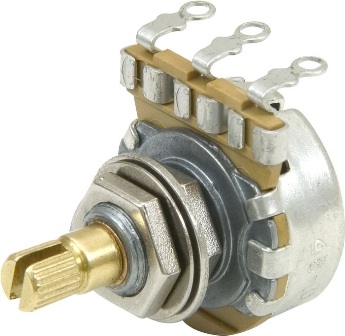
Variable resistors are designed for a large number of tuning cycles, which can reach hundreds of thousands of times. Variable resistors are therefore more durable than trimer resistors.However, even here you need to know the measure, because if you exceed the guaranteed number of reset cycles, then the variable resistor may fail.
Obviously, a trimer resistor will never replace a variable, and if this principle is violated, then you can pay with the low reliability of the constructed device.
Variable resistors are used in those devices where regulation is implied by the purpose of the device, for example volume control in a speaker system or smooth temperature control of a domestic air heater. On an electric guitar, you can find a variable resistor like a potentiometer.
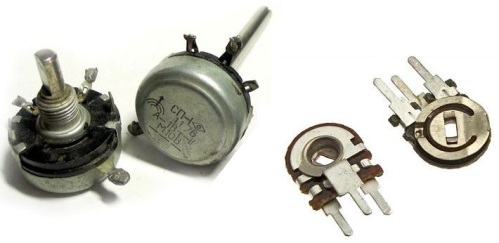
SP-1 type variable resistors the protective cover has a terminal that connects to the common terminal, and the cover serves as an electrical shield. SP3-28a type trimer resistors do not have a protective cover, the body of the device in which this resistor will be installed will serve as protection.
And although internally the resistors are similar in design, everything looks different from the outside. The variable resistor has a sturdy metal or plastic handle connected to the slider, and the trimmer is adjusted with a screwdriver that is inserted into a special slot in the adjustment mechanism connected to the circular slider.
In the diagrams variable resistors it is easy to recognize, they are depicted as a fixed resistor, but with an adjusting tap in the form of an arrow symbolizing the movable contact of a potentiometer or rheostat, depending on the switching circuit of the component. The letter R in the diagram in the same way means a variable resistor as well as a constant one, the only difference is in the graphic representation of the component.
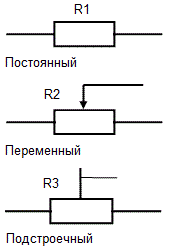
With a rheostat switching circuit, an image in the form of a resistor crossed diagonally by an arrow is used, this indicates that only two contacts are included - the regulating one and one of the terminal ones. The trimmer resistor on the diagram is indicated without an arrow, and the adjusting contact is indicated by a thin strip.
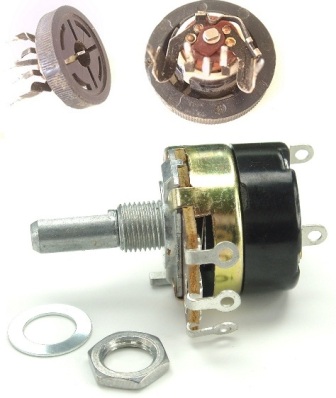
Variable resistors sometimes combine the function of a switch with the function of a potentiometer. This is convenient when a variable resistor is used as a volume control, say, for a portable radio, turning the knob first turns it on, then immediately adjusts the volume.
Electrically, the built-in switch is not connected to the resistor circuit, but is in the same housing as the movable contact variable resistive element. An example of variable resistors with a built-in switch is the domestic SP3-3bM or 24S1 made in China.
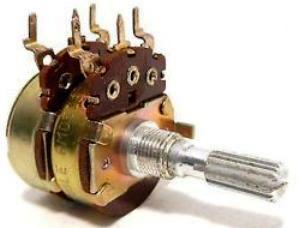
Among the variable resistors there are double and even quadruple, when the turn of a knob results in the rearrangement of two or four electrically independent circuits at once, into functionally connected circuits. For example, controlling the stereo balance is convenient to do this way. Equalizers use up to two dozen dual resistors.
In the diagrams, double (quadruple) resistors differ in designation and graphical representation: the dotted line indicates that the mechanically movable contacts are combined.
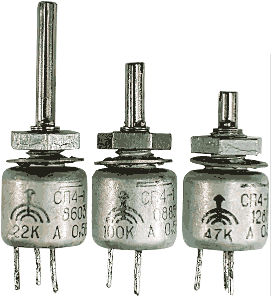
There are many types of trimmers and variable resistors on the market today. These are integral trimming resistors type SP4-1filled with epoxy resin and intended for defense equipment and trimmers type SP3-16b for vertical mounting on a board, etc.
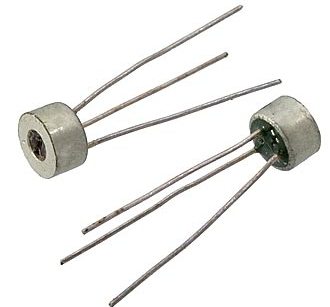
In the manufacture of household equipment, small trimming resistors are soldered on the boards, which, by the way, can reach 0.5 watts of power. In some of them, for example in SP3-19ametal ceramics are used as a resistive layer.
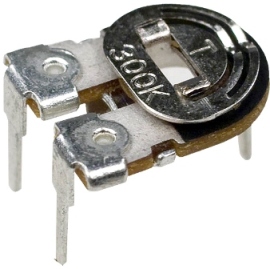
There are also very simple foil-based cutting resistors, such as SP3-38 with an open case, vulnerable to moisture and dust, and a power of no more than 0.25 watts. Such resistors are adjusted with a dielectric screwdriver to avoid accidental short circuits. These simple resistors are often found in consumer electronics, such as monitor power supplies.
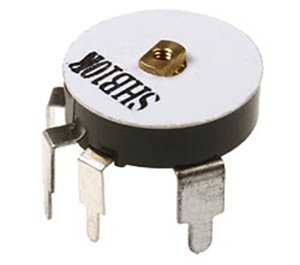
Some trimer resistors are hermetically sealed, for example R-16N2, they are adjusted with a special screwdriver and are more reliable, since dust does not fall on the resistive track and moisture does not condense.
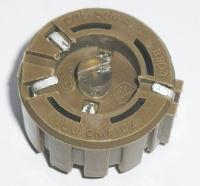
Powerful 3-watt resistors type SP5-50MA the housing has ventilation holes in which the wire is wound in the form of a toroid, and the contact slide slides along it when the handle is turned with a screwdriver.
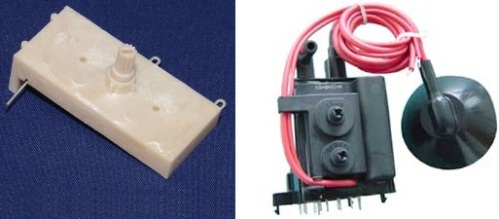
On some CRT TVs you can still find high voltage trimming resistors such as NR1-9A, a resistance of 68 megohms and a rated power of 4 watts. It is actually a set of sintered resistors in one package, and the typical operating voltage for this resistor is 8.5 kV, with a maximum of 15 kV. Today, similar resistors are built into TDKS.
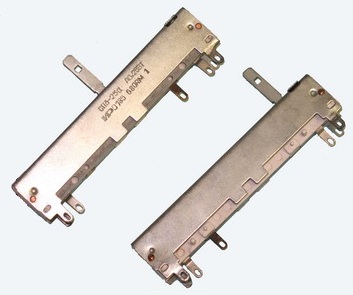
In analog audio equipment you can find sliding or sliding variable resistors, type SP3-23a, which are responsible for adjusting volume, tone, balance, etc. These are linear resistors that can be doubled, such as SP3-23b.
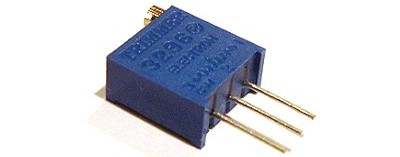
Trimmer resistors are often found in electronic equipment, measuring instruments, etc. Their mechanism allows you to precisely adjust the resistance, and the number of revolutions is measured in several tens. The worm gear allows for slow rotation and smooth movement of the sliding contact along the resistive track, so the circuits are tuned very, very precisely.
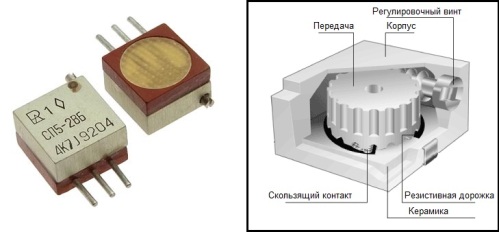
For example, a multi-turn trimmer resistor SP5-2VB it is precisely adjusted using a worm gear inside the housing, and to completely traverse the entire resistive track, it is necessary to make 40 revolutions with a screwdriver. Resistors of this type in various modifications have a power of 0.125 to 1 watt and are designed for 100-200 tuning cycles.
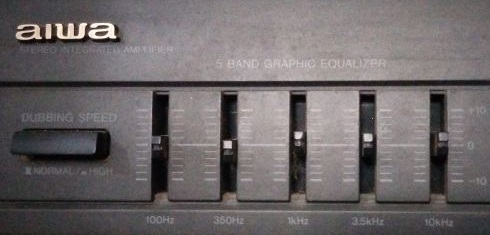
All types of variable resistors are widely used as potentiometers in a variety of appliances, from household appliances such as heaters, water heaters, speaker systems to musical instruments such as electric guitars and synthesizers. Trim resistors can be found on almost any printed circuit board, from televisions to digital oscilloscopes and defense technology.
